A few months ago, Cliff covered Fujitsu NRAM Production to Start in 2019. At Hot Chips 30 we got a better view of the NRAM technology. The summary from the presentation was simple: NRAM exudes excellence. It is purported to use a simple and inexpensive manufacturing process. It is persistent with data retention that dwarfs NAND. Speeds are close to that of DRAM. The Flint Center in Cupertino, California was a scene with hundreds of the industry’s best minds baffled in how excellent NRAM is.
Natero NRAM Carbon Nanotube Persistent Memory
The basics of the Natero NRAM is that it is a carbon nanotube persistent memory. It uses the Van der Waals effect on set of specifically designed carbon nanotubes to modulate resistance.
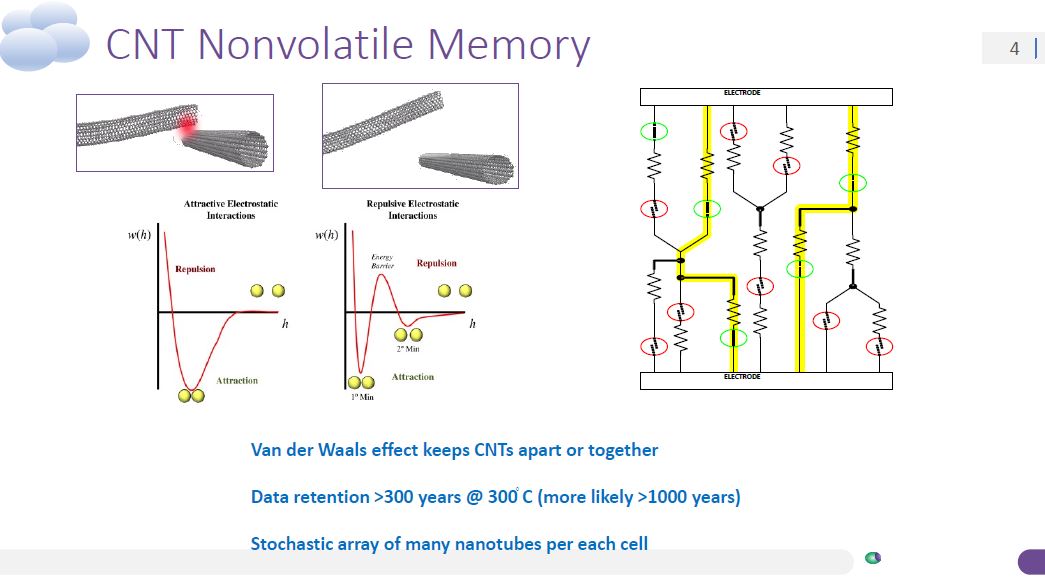
For those that are not electrical engineers, the Van der Waals effect essentially means that molecular or atomic bonds will either repel or attract unless acted upon by a force. This gets to the basics of NRAM and how it uses carbon nanotubes. By introducing a charge, the carbon nanotubes will either attract or repel one another.
Nantero Carbon Nanotube NRAM: How it Works
The slide that was animated during the talk at Hot Chips was this one. Essentially, depending on the process node, carbon nanotubes are designed with a length and a width to always stay somewhat horizontal when applied. When a charge is introduced the carbon nanotubes repel and fill the void as shown in this diagram. Alternatively, this repulsion can be switched to attraction and the stack of carbon nanotubes compresses, creating more void space and therefore changing the resistance of the circuit.
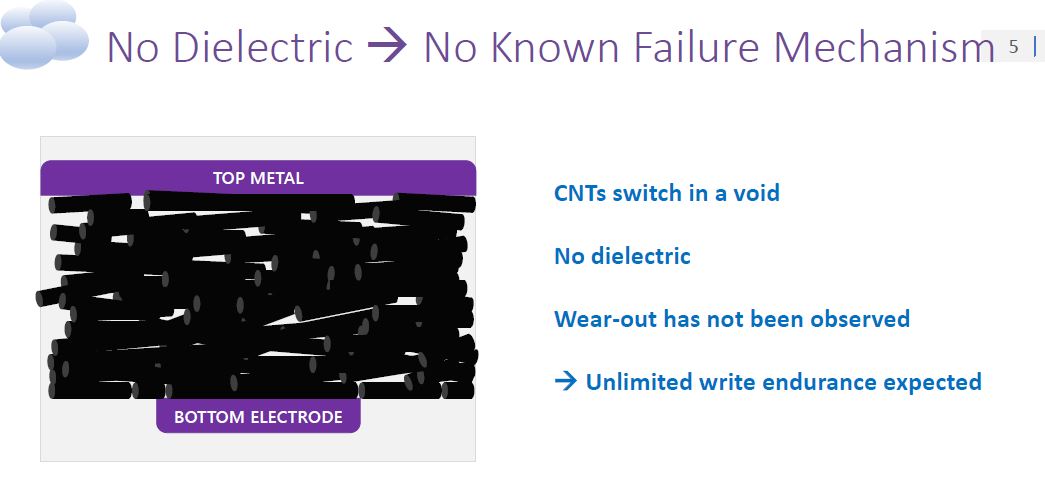
More importantly, the changes due to the Van der Waals effect do not change due to power loss. As a result, the memory is persistent.
In terms of actual resistance, the carbon nanotubes can get more than a 10:1 difference between 0 and 1 states. For companies licensing Nantero NRAM technology that means it is easy for them to build a memory with 0 and 1’s an then read the data back reliably.
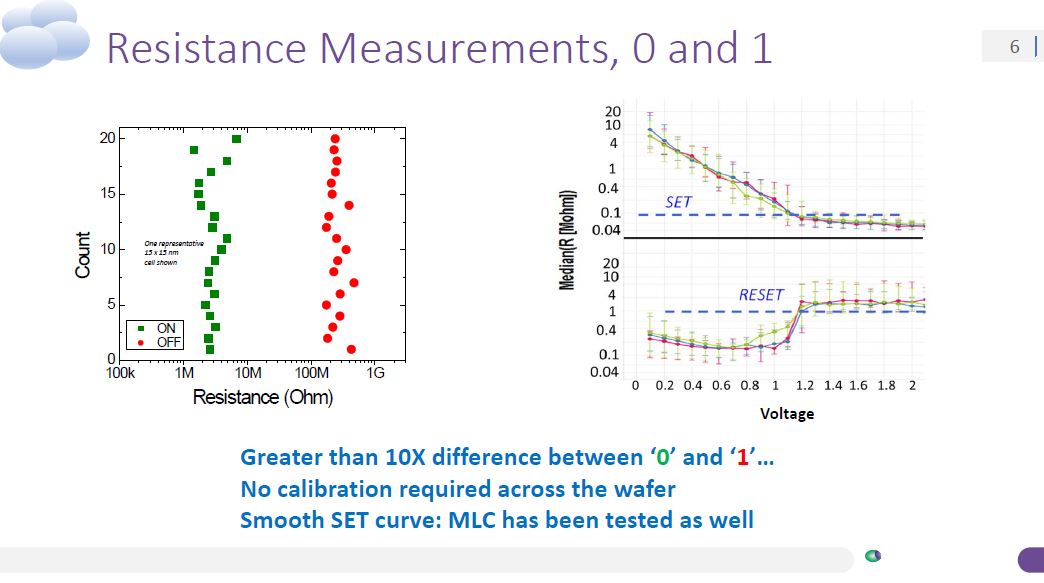
On stage, the company said it has tested MLC modes as well. Here you can think of the first generation like NAND reading 0 or 1 from a higher or low value. MLC means that a controller would have to distinguish between steps.
The basic idea is that this mechanism is very reliable and decently fast (more on that later.)
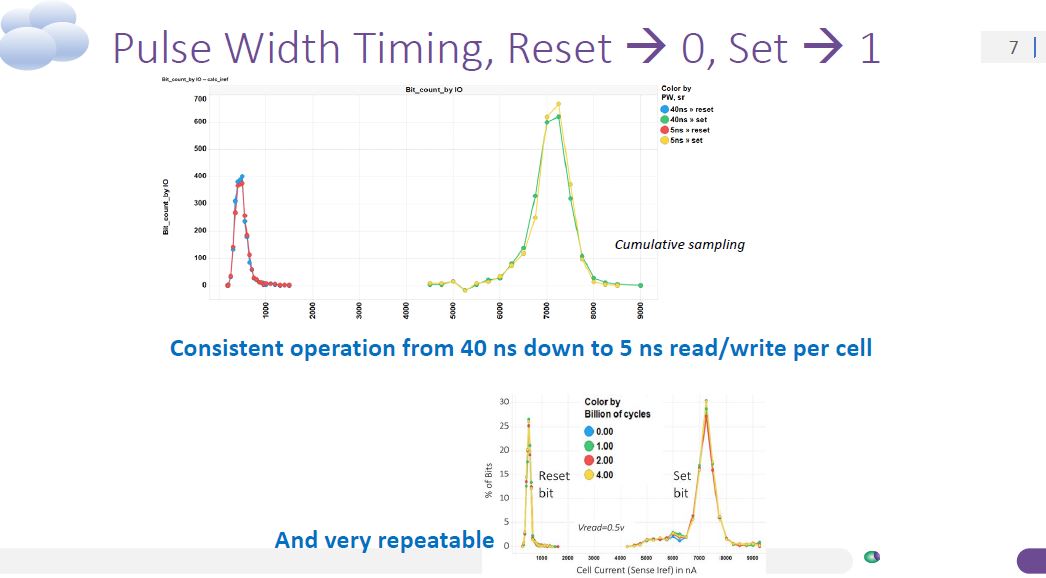
The Nantero Carbon Nanotube NRAM memory is claimed to operate among a wide temperature array.
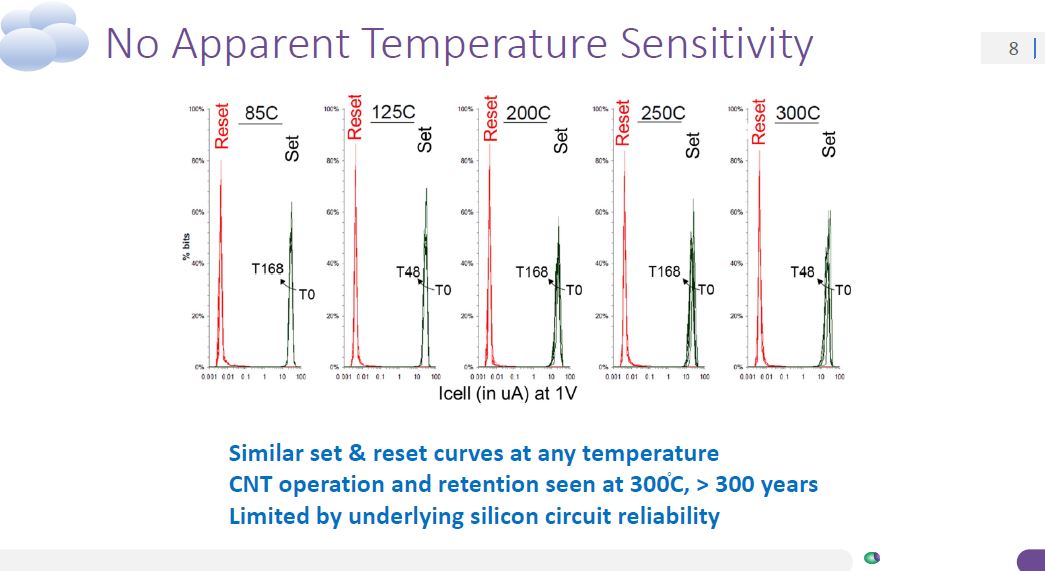
On stage, the company said data retention of devices should be hundreds or over a thousand years.

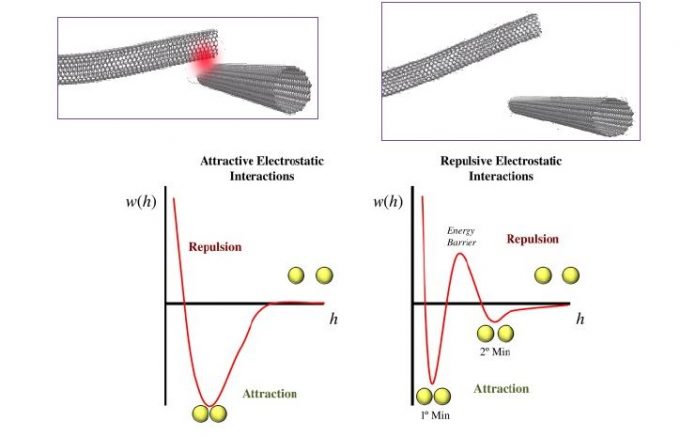


While this might seem like everything is too good to be true, this was something that has been a long time coming. A few years ago UW Madison created carbon nanotube transistors that out performed silicon. https://news.wisc.edu/for-first-time-carbon-nanotube-transistors-outperform-silicon/ With a couple more years of R&D and process refinements it isn’t out of the question that nanotubes are getting to the point of being ready for RAM and eventually will probably replace silicon inside GPUs and CPUs.
A couple interesting questions pop to mind then:
– How well does a cell hold up under varying environmental conditions: Temperature, humidity, shock (Both physical and thermal shock), vibration?
– Do to the mechanical deformation involved, does the cell wear out?
– Due to a vibration or shock (physical or thermal again), can the gap necessary be created or destroyed creating a false bit flip?
Hi, guys, thanks for following up on this. We’re pretty excited for obvious reasons. To Don’s questions, we haven’t yet seen any tendencies for wear-out. The carbon nanotubes move in a void but once the contact is made between tubes via injection of electrostatic force, the bonding is atomic inside the van der Waals region. To separate the tube connections, a phononic disruption is needed to jump back over the vdW barrier. Macro effects like shock and vibe don’t impact the cells which are molecular level effects. Also, we use hundreds of switching tubes per cell so anything that would have that kind of impact would have other more catastrophic effects. One of the things carbon nanotubes are known for is lack of sensitivity to thermals, so temperature extremes don’t seem to have any effect on the cells; the limit would be the underlying CMOS.